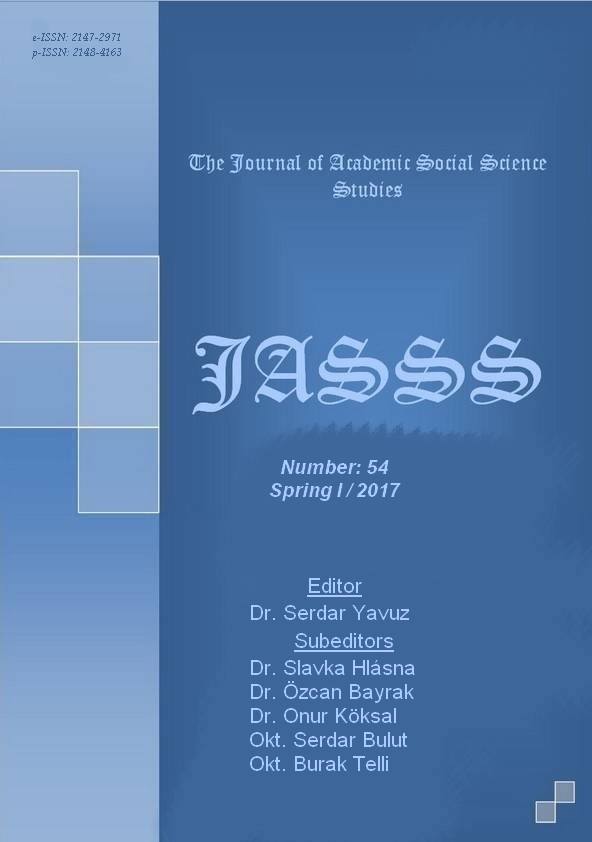Author :
Abstract
Bu çalışmada Gestalt temas engelleri cinsiyet, aile biçimi, algılanan anne ve baba tutumları açısından incelenmiştir. Araştırmanın katılımcılarını 2010- 2011 eğitim öğretim yılında Kastamonu Üniversitesi Eğitim fakültesinde öğrenimine devam eden 735 ikinci ve üçüncü sınıf öğrencisi oluşturmaktadır. Araştırmada öğrencilerin temas engelleri düzeylerini belirlemek amacıyla Tagay (2010) tarafından geliştirilen “Gestalt Temas Engelleri Ölçeği”nden yararlanılmıştır. Öğrencilerin temas engellerini belirlemek amacıyla tek yönlü Manova yöntemi kullanılmıştır. Gruplar arasındaki farklılıkların kaynağımı belirlemek amacıyla ise Post hock testlerinden Tukey’den yararlanılmış, anlamlılık düzeyi .05 kabul edilmiştir. Araştırma bulgularına göre erkek öğrencilerin tam temas engel düzeyleri kız öğrencilere göre anlamlı düzeyde yüksek bulunmuşken, temas sonrası engel düzeyleri kız öğrencilerinkine göre anlamlı bir şekilde düşük çıkmıştır. Temas ve bağımlı temas engel düzeyleri açısından ise cinsiyetler arasında anlamlı bir farklılık bulunmamıştır. Araştırma sonuçlarına göre otoriter anne tutumunu algılayan öğrencilerin koruyucu anne tutumunu algılayanlara göre temas engel düzeyleri anlamlı düzeyde yüksek bulunmuştur. Bununla beraber, koruyucu anne tutumunu algılayan öğrencilerin demokratik anne tutumunu algılayanlara göre temas sonrası engel düzeylerinin anlamlı düzeyde yüksek olduğu gözlenmiştir. Aile tipi değişkeni açısından bakıldığında, çekirdek aile tipine sahip öğrencilerin geniş aile tipine sahip olanlara göre temas ve bağımlı temas engel düzeylerinin anlamlı bir şekilde yüksek olduğu bulgusuna ulaşılmıştır. Öte yandan araştırmada öğrencilerin algıladıkları baba tutumları temas, tam temas, bağımlı temas ve temas sonrası engel düzeyleri açısından anlamlı bir farklılık göstermemiştir. Araştırmada elde edilen bulgular Türk kültürü bağlamında tartışılmıştır.
Keywords
Abstract
The purpose of this study is to determine the university students’ contact disturbances level in terms of gender, family type, and perceived maternal and paternal attitudes. Participants of the study were 735 sophomore and junior students attending the Faculty of Education at Kastamonu University during 2010-2011 academic year. The contact disturbance levels of the students have been determined through “Gestalt Contact Disturbances Scale” developed by Tagay (2010). To determine the differences, One-Way MANOVA method has been employed. In cases where differences were detected between the groups, the Tukey post hoc test was utilized in order to find the source of difference. The level for significant was set at .05. According to results, while full contact disturbance levels of male students are significantly higher than those of female students, post-contact disturbance levels of male students are significantly lower than those of their female counterparts, which stands as the answer to whether the contact, full contact, dependent contact, and post-contact disturbances of university students differ in terms of gender. The result indicates that students perceiving authoritarian maternal attitudes have significantly higher contact disturbances than those adopting protective attitudes whereas students adopting protective maternal attitudes have significantly lower post-contact disturbance levels in comparison to students adopting democratic maternal attitudes. It can be said in terms of family type variable that students living in a nuclear family have significantly higher contact and dependent contact disturbance levels in comparison to students living in an extended family setting. On the other hand, there aren’t seen any significant differences in terms of perceived paternal attitudes. The results of the study are discussed in the context of Turkish culture.





